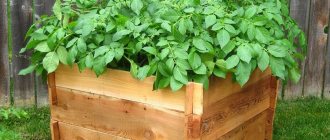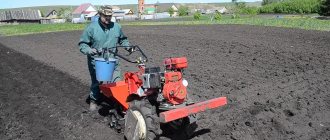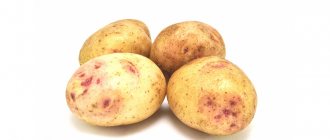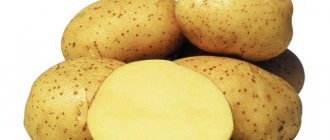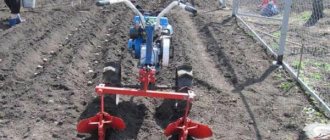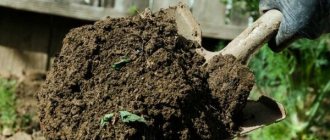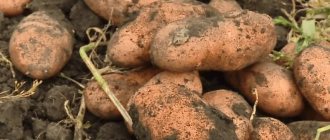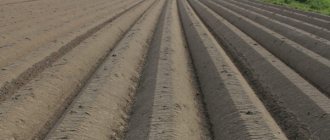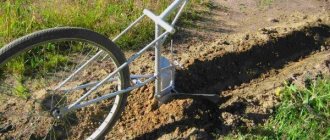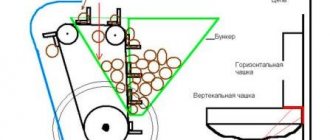Hand Tools Overview
Now, indeed, it will be easier to plant potatoes using original devices, and in this case a shovel will no longer be needed. The tools that replace the spade not only make the process easier - thanks to them, the rows are perfectly even.
The plantation looks neat, and it is more convenient to hill up the bushes. Each of the proposed devices allows you to maintain the planting pattern, so potato harvesting will actually be carried out using a mechanized method.
The device can be bought in a store or ordered online, but it is cheaper to make it yourself. No special material is required here - improvised means will do. The drawings of homemade tools are simple, so even a person without skills can make them.
Planting potatoes without a shovel
Which of the summer residents has at least once seen this device in action and is interested in how to make a marker for planting potatoes with your own hands. Craftsmen have invented several types of convenient devices. It is suggested to use metal pipes, wooden stakes or a durable board as the material.
Simple model
Making the tool is not difficult - just take a stake with a diameter of 6-7 cm and a height of 0.9 m. The depth of the hole under the tuber will be limited by a support made of a rod, fixed horizontally at a height of 15 cm from the tip.
Mittlider device
This model is a little more complicated than the previous one. The frame is made from a metal pipe with a diameter of 2.1 cm. A cone with a diameter of 5.5 or 6.5 cm is welded to it, allowing you to make indentations of about 25 cm. From the support leg to the marker 30 cm - this will be the distance between the holes.
Device for 3 holes
With this tool, planting potatoes will go faster, since 3 markers are already attached to one frame. To prevent the device from being heavy, it is recommended to use lightweight steel pipes for its manufacture (these are usually used in gas and water pipelines). Aluminum and strong wood (oak, acacia) are suitable for cones.
The following drawing (fig. below) will give a visual idea of the design. All sizes are indicated on it.
3 hole marker
To make a homemade tool reliable, you need to follow the given algorithm during manufacturing:
- a long pipe is bent into a “P” shape and welded to a horizontal cross member;
- in the upper part of the cones, a thread is cut in the center;
- in the pipe on which the markers will be attached, through holes with a diameter of 9 mm are drilled in the center and along the edges;
- Cones are attached to the frame using bolts;
- Plugs are put on the ends of the pipe.
Using bolts, you can adjust the height of the markers, depending on the required depth of the holes.
On a note. The drawing of the 3-cone fixture gives approximate dimensions for the height of the frame. Each summer resident determines this parameter according to his height. To make the device last longer, the metal parts are coated with a corrosion inhibitor. Wooden elements should be varnished and varnished, then the earth will not stick to them.
A scriber will help you get perfectly even rows when planting potatoes. This is the most primitive device that can be easily made in an hour and a half. To create the structure you will need 2 pointed wooden stakes, 10 cm in diameter and a length suitable for your height. For ease of work, handles should be placed on the upper edges of the beams.
The stakes are connected by crossbars made of strong boards 1.5 m long. The gap between the stakes should correspond to the row spacing. If manual cultivation of an area with planted potatoes is meant, up to 50-55 cm is sufficient. When using a cultivator to care for a plantation, the distance is increased to 0.60 m. If the work is carried out with a moto tractor, then it is better to maintain a gap of about 0.75 m.
A vertical rail is attached to the protruding part of the lower crossbar at the same distance from the stake - this will be the starting reference point. The lower horizontal bar itself should be located at a height of 10-15 cm from the tip of the stakes (under the depth of the holes).
Simplified version of the scriber
Planting plow
A hand plow will help you plant potatoes without a shovel. To make it yourself, you will have to put in some effort. But they are worth spending, since the device turns out to be universal - the plow is used not only for planting potato beds, but also for subsequent hilling of bushes and loosening row spacing.
Related article: Preparing soil for potatoes - 5 important aspects
Since hollow pipes and sheet metal are used in the manufacture of the structure, you will need welding equipment, a gas torch or blowtorch, and an angle grinder.
To create a universal method of planting potatoes, follow this algorithm:
- a meter pipe with a diameter of 2.5 cm is filled with sand and closed with plugs;
- bend at an angle of 10-15 degrees at a distance of 30 cm from the edge, using a blowtorch; a stand is obtained, indicated in the drawing by position 3;
- Having removed the plugs, pour out sand (it is only necessary for neat bending of the pipe);
- a double-blade working element with a trimming knife is formed from pieces of metal and secured from the bottom of the rack with bolts, for which holes are pre-drilled in the pipe;
- control handle 4 is inserted into the pipe from above and secured with bolt 12; there should be several holes on the handle to create a telescopic retractable system;
- the front link 5 is shaped as shown in the drawing and welded to the rack; positions 9, 10 indicate the presence of a horny handle;
- Using brackets 7 and 8, a lanyard 6 is attached to the rod and riser, allowing you to adjust the level of attack of the knife.
Manual plow with traction
For ease of control of the plow, a strong neck-axillary tape can be attached to the base of the draft handles (position 11). It will allow the lead worker to evenly distribute his efforts when walking with the plow across the site.
Homemade equipment for planting and hilling potatoes, diagrams
The range of homemade equipment for processing potatoes is huge. And although there are many devices on sale that can be used to plant and hill up potatoes, craftsmen are constantly creating new devices to make the work easier and faster during the sowing season.
The simplest device is a marker. Its purpose is to mark the ridges in such a way as to make the plantings even and suitable for subsequent processing with motor cultivators. For homemade markers, the distance between the cones coincides with the track dimensions of the existing equipment that will subsequently be used to process the plantings. Homemade markers can be simple or complex, made of wood or metal. The main thing here is how far apart the cones that punch the holes are located.
DIY markers for planting potatoes
Markers differ from each other in the number of cones for punching holes.
Single hole marker
The simplest marker is a wooden stake about 90 cm high and 60–70 mm in diameter. A crossbar is fixed perpendicularly at a distance of 15 cm from the tip. This is a stop to limit the depth of the hole. The locations of the holes are marked using cords.
Three hole marker
The three-hole marker consists of a frame and three cones. The distance between the cones is 450 mm. The cones are attached to the bottom bar of the frame with bolts that allow you to adjust the depth of the pits. Materials used:
- profile pipe 25x25x2 mm;
- aluminum or dense wood for cones;
- M8 bolts 40–80 mm long.
The height of the frame is selected according to the height of the person who will work with the marker
Marker with adjustable distance between holes
The distance between the holes depends on how the marker pins are extended.
To make a marker with an adjustable distance between holes, you will need the following materials:
- water and gas pipe with a diameter of 60 mm, a wall thickness of 3 mm, a length of 565 mm for the load-bearing beam;
- steel sheet 1.5 mm thick for conical elements;
- pipe 60x3 mm, 100 mm long for a cylindrical body;
- pipe 21x2.5 mm, 250 mm long for marker;
- pipe 21x2.5 mm, 330 mm long for a retractable bracket for a marker;
- pipe 27x3 mm, 65 mm long for the guide sleeve;
- bolt M8x40 (fixing) – 3 pcs.;
- nut M8 (welded) 3 pcs.;
- pipe 27x3 mm, 120 mm long for the stand bushing;
- pipe 21x2.5 mm, 1500 mm long for a two-piece welded stand;
- bolt M10x20 (clamping) – 1 pc.;
- pipe 54x2.5 mm, length - 560 mm for a retractable bracket;
- plug - 2 pcs.
Retractable marker pins allow you to change the distance between holes
The procedure for making a marker.
- Make elements for punching holes. Weld together the cylinders and conical tips (2 and 3).
- Weld a bushing for the stand (10), a nut (8), two guide bushings for the brackets (6) and two elements for punching holes to the supporting beam.
- Weld two markers to the brackets (5).
- Weld the third marker to the retractable bracket (12), fix it at a distance of 50 cm from the outer cone.
- Screw the bolts into the nuts (8).
- Insert the stand (9) into the bushing (10) and secure it with the clamping bolt (11).
- Weld the plugs to the handles (13).
Photo gallery: types of markers for planting potatoes
Single cone marker Double cone marker
Three cone marker
DIY shovel-harvester
Another device is a shovel-harvester. It's designed this way. Two triangle-shaped shovels are attached to the handles. When closed, the shovels resemble a beak. The shovel goes deeper into the ground by pressing the “beak”, the handles are brought together, the shovels open underground, and a tuber is thrown into the resulting hole. Then the shovel is removed from the ground without covering it. The tuber remains in the garden.
Photo gallery: shovel-harvester
Drawing of a shovel-harvester. Shovel-harvester is a simple device for planting potatoes. Shovel-harvester in action.
Do-it-yourself potato planter for walk-behind tractor
People's engineers even make accessories for motor cultivators with their own hands. Many authors who published descriptions of their homemade potato planters used drawings of factory-made units. The principle of operation of the mechanism is that when a mini-tractor or walk-behind tractor moves, the wheels of the unit spin, and the axle with the drive sprocket rotates. Above the leading star is a small star. The stars are connected by a chain. Cups are welded onto the chain for removing potatoes from the hopper.
Factory potato planter (assembly drawing): 1 - counterweight; 2 - unit; 3 - bracket; 4 - tensioner; 5 - conveyor; 6 - hopper; 7, 9, 16, 23, 24 - bolt; 8 - stand; 10 — sector; 11 — disk; 12 — ridge height; 13 — landing pitch; 14 — furrower; 15 — planting depth; 17 — hitch; 18 — track width; 19 — bracket; 20 — drive drum shaft; 21 — conveyor; 22 — angle of attack
The frame for a homemade potato planter is assembled from channels. A hopper made of plywood or metal is installed on the frame; the hopper is equipped with a feed elevator. The elevator is assembled from special cups. The cups are attached to the chain at a distance of 270 mm and move with the chain.
Photo gallery: device for feeding elevator in potato planter
Drawing of fastening the cups to the chain The cup is a circle made of 10 mm wire with a diameter of 50–60 mm, two arcs are welded crosswise at the bottom. Securing the cup to the chain
Materials for making a potato planter:
- metal corner;
- tank from a Soviet washing machine;
- gear;
- chain;
- fittings;
- steel wire;
- channel;
- wheels.
What tools will you need:
- welding machine;
- Bulgarian;
- drill;
- hammer;
- a set of keys;
- screwdriver;
- wire cutters
Work order:
- Cut the corners and channel to size.
- Weld the structure.
- Attach the axle with gear to the frame.
- Make scoop cups.
- Secure the cups to the chain.
- Weld vertical rods to the frame.
- Place the wheels on the axle and tighten the chain.
- Install a potato bin.
How to use the devices
The devices described above make the planting process easier and faster, but you need to get the hang of using the tools. To keep things moving, it is recommended to do the work with a partner.
How to manage markers
It doesn’t matter what type of device will be used, the principle of operation is the same. To begin with, mark the first row with twine and make indentations in the ground parallel to it with a marker, applying some force to this. Moving along the twine, one worker forms holes, followed by placing sprouted tubers in them.
Using a 3-cone marker, planting can be completed in a short time. The next rows are designed based on the nearest planted one. If the area is small, then the holes are marked in a checkerboard pattern for ease of subsequent processing.
Planting with a scriber
How simple the design of this device is, so simple are the actions of the farmer when using it. Even a large potato plot can be easily planted within a couple of hours, following these instructions:
- holding the tool with both hands, set a reference point (side rail) at the beginning of the section;
- press with your foot on the lower crossbar so that the stakes penetrate the soil to the required depth;
- After moving the instrument back and forth for a few seconds, expand the hole to the required size.
Having passed through the site in one direction in this way, you get 3 ridges of holes: 2 from stakes and another from a vertical rail. Turning in the opposite direction, the scriber is placed as a guide in the hole of the last ridge. While the sower fills the first 2 rows with potatoes, his partner continues marking the rows with a scriber, walking towards him.
Planting under the plow
Despite the fact that the manufacture of this structure will take some time, the planting of tuber crops itself will be easier compared to a situation where you would have to work with a shovel. True, in this embodiment, a trench is formed into which the potatoes are placed by a third person (two people operate the plow).
It will be difficult to maintain an even distance, but the row will turn out even if you focus on the stretched twine. Before you start plowing, the tool must be configured:
- by rotating the lanyard nut in one direction or the other, set the desired angle of attack of the knife;
- use a bolt to adjust the height of the control column handle to suit your height;
- The neck-axillary belt is adjusted to the figure of the partner walking in front.
The traction force in the process is provided by the actions of the person pulling the plow. It is on him that the belt is worn. Its main task is to maintain a constant angle of attack. The person walking behind, controlling the stand, pushes the device forward.
As a result, the knife easily cuts into the ground, the dumps throw the soil to the sides, creating a neat trench for planting. If the wings are adjusted correctly, the shifted soil will partially fill the previous groove in which the tubers are already laid.
Preparing the site for planting
The design of this device is so convenient to use that it can be operated by 2 people with different builds and different heights. Using a plow throughout the season will ensure convenient cultivation of potatoes on a large plantation.
But even the simpler devices described above significantly increase the productivity of planting potato tubers, allowing seeders to work harmoniously.
Method number 2: miracle shovel (variation 1)
An interesting and effective way is to plant potatoes with a miracle shovel. This device allows you to significantly speed up and facilitate this monotonous and hard work. Making a miracle shovel is quite possible for any man who knows how to handle tools. The design consists of two wooden, metal or plastic handles, to the ends of which are attached steel half-cones, which when closed resemble a “beak” and are a kind of container for planting material. A leg bar can be attached to the cone for convenience.
The structure with a closed “beak” goes deep into the ground, the handles are brought together, when they are spread apart, the petals open and the tuber ends up in the hole. The miracle shovel is removed in the open state, and the planted potatoes are automatically covered with soil. The disadvantage of the design is that you have to constantly bend over to put a new tuber in the container.
Drawing of a miracle shovel
How to make a simple marker
Making a simple marker is easy. It is enough to have a regular board and wooden pegs on hand.
A marker for planting potatoes is a wooden stake with a diameter of about 65 mm. The height of the stake must be at least 90 centimeters. A transverse strip is attached at a height of about 15 cm from the sharp edge. It will serve as a stop that limits the depth of the hole.
Before planting with this tool, you must first mark the locations of the holes using a rope. The ropes are pulled along the rows at a distance of 40-80 cm from each other. Everyone sets the distance independently; it depends on whether the hilling will be carried out with a walk-behind tractor or manually. A gap of about 25 centimeters is left between the bushes, plus or minus five centimeters, depending on the size of the potatoes being planted and the variety.
Why is a homemade device better than a purchased device? In the marker you can set the exact distance, which will be equal to the distance between the wheels of the cultivator or tractor.
Hedgehog cultivator for weeding
They remove grass with roots, unlike flat cutters, which only cut the stems. Hedgehogs rake the soil between the rows, which creates distinct rows and beautiful beds. Loose soil allows oxygen and liquid to pass through well, which increases the growth of potato roots, and this is a guarantee of an excellent harvest.
Hedgehogs for weeding potatoes
Weeding with a walk-behind tractor is done using certain paws or a rotating cutter. The cutter is rotated by the power take-off shaft. The advantage of the paws is ease of installation and thoroughness in loosening the soil. They loosen the soil at a depth of 4-7 centimeters, depending on its condition.
To operate, the presser feet need to be secured in certain fasteners at a distance equal to the width of the row. The fastener should have a slight overlap that will cover both legs. Devices can be either single-sided or double-sided. If the device is one-sided, then the legs must be attached so that the blades are located towards the row spacing.
The paws, which have one-sided blades, can be installed in another way, which makes it possible to process the bed on both sides simultaneously.
There is another device for manual weeding called a weeder. This is a frame, with a knife and a drum. Its wheels are placed between the rows, the knife chops the grass, and the spinning drum catches it and throws it back.
There are manual and electric cultivators with a gasoline engine. For weeding, devices with 2 knives are used, which are attached at an angle of 45°. It is best to carry out weeding with a cultivator, which has three-pronged mini forks installed instead of knives.
For comfort, these devices are installed on wheels: the summer resident pushes it, pressing it as close to the garden bed as possible.
Weeding cultivator on wheels with two blades
Using a device with a hedgehog attachment, they immediately weed and hill up the potatoes. The hedgehog consists of 2 cones mounted on a frame. The cone is made of 3 steel wheels of different diameters. Pointed spikes are welded onto the wheels. 2 hedgehogs are attached to the frame, spinning, they hook the grass in parallel and rake the soil from row to row.
Cultivator with hedgehog attachmentElectric cultivators are more dynamic and are used for small gardens. Their main drawback is the need to pull the cable from the outlet, which is not always comfortable. It is more rational to use cultivators with a gasoline engine. But such cultivators are less dynamic than manual ones, but the most productive. All types of cultivators are equipped with hedgehog attachments. The strength of the engine is selected depending on the condition of the earth; the heavier it is, the stronger the device.
Marker for planting potatoes using the Mittlider system
The American agronomist Mittlider invented his own method of planting potatoes. According to his method, the vegetable garden should be divided into planting beds up to nine meters long. The width of the beds is 45 centimeters. There is a distance of about 100 cm between them. The narrow beds method allows you to water and fertilize only the soil on them.
To plant potatoes using this method, you need to make a more complex device. In order to understand the principle of this device, you need to look at the diagram.
To make a marker for planting potatoes with your own hands, you will need a metal pipe with a diameter of 21 mm; it is used to mark holes. Thus, the holes are obtained at a distance of 29 cm from each other. Another pipe with a diameter of 55 (65) mm is welded to the frame, from which a cone is formed that will punch holes.
Before planting, first stretch the cords along the beds. The frame is placed parallel to the stretched lines, starting to plant the first row, it is pressed into the ground. The marking pin will mark the hole; you need to stick a cone there. Do this until the end of the row. On another row, holes are made in a checkerboard pattern.
Using this device, you can grow a decent harvest even in a small area.
Necessary materials
The basis of the body of our potato planter is a pipe. The diameter of the pipe is selected in such a way that the potato tuber can move inside it calmly and without getting stuck anywhere. As a rule, a pipe with a diameter of at least 70 mm is used.
The length of the pipe is selected individually and is usually 80-90 cm. It is advisable to use a thin-walled pipe. This is necessary in order not to make the entire device very heavy. At the same time, the pipe must be strong enough so as not to deform from frequent efforts to insert the device into the ground.
The valve is made of iron; its thickness should not be less than the thickness of the walls of the pipe itself. To attach the valve, we need a hinge, the role of which can be successfully performed by a regular door hinge. A durable metal sheet, or corner, is also used for the footrest.
Planting roses in open ground and caring for them: tips for beginners
You will also need a handle and an upper basket for tubers and a feed limiting mechanism. It can be easily made from a mesh or an unnecessary bucket. So, we find and prepare:
- A light but durable pipe with a diameter of at least 70 mm.
- Durable metal sheet for valve cover
- Valve joint
- Two metal handles (such as two half-inch pieces of water pipe)
- Mesh basket or bucket
At any summer cottage it is necessary to have a high-quality snow blower.
You can either purchase a snow blower, such as a Honda snow blower.
Or try to do it yourself. In this article you will find drawings of a snow blower for a walk-behind tractor.
Improved three hole marker
Using three cones and metal pipes, you can make a device that will allow you to make three holes at once. It is necessary to take a steel pipe D 32 mm. Steel is easy to weld, although you can use a duralumin pipe.
Cones are made from high-strength wood, such as oak or acacia, but preferably aluminum.
The cones are screwed to the bottom crossbar with long bolts. The depth of the hole depends on the length of the bolts. The longer the fixing bolts are, the deeper the hole will be. Make a distance of 45 cm between the cones.
DIY potato planter
The simplest device for planting potatoes can be a potato planter. Any man can make a potato planter after spending a couple of hours. You will need to take two boards 1.5 meters long, as well as two stakes with a diameter of 10 cm.
Pegs are made from thick spruce branches. They are processed, sharpened, and made into handles. Wooden transverse strips are nailed to them. Make a distance of about 60-65 centimeters between the stakes if the planting will subsequently be processed with a cultivator or mini-tractor. The distance should be no more than 55 cm if the processing is manual.
The bottom board should be with a reserve; a note is made on it using a narrow strip at the same distance as the stakes. It will help determine the beginning of the pits.
How to use this device? Place the device on the ground, holding it by the handles in front of you. Press down to make holes. You immediately get two ridges of holes, the third will become a note, they follow it in the opposite direction. The second person will follow the marker and plant the potatoes.
Description and timing of the procedure
Weeding time is determined taking into account weather conditions and soil structure . There is no need to weed too often, the main thing is to ensure that the grass does not choke the potato bushes.
How often to weed
On average, a plot of potatoes is cultivated 2-3 times per season . Water for the first time 3-4 weeks after sowing, removing the first weeds. At this time, young shoots reach a height of 2-4 cm.
The field is processed the second time when the bushes reach a height of 20-30 cm, before flowering . Weeding is combined with hilling and loosening the soil.
Advice. If weather conditions have delayed the emergence of seedlings, and the weeds have already grown, then carefully remove them with a flat cutter without waiting for the potato sprouts to appear.
During and after the bushes bloom, it becomes difficult to cultivate the area.
When not to weed
The appearance of flowers on the bushes indicates the beginning of the formation of tubers . During this period, weeding and loosening is not recommended, since sharp tools can easily damage small potatoes.
If you still have to cultivate the potato field during this period, then do it carefully, acting only on the surface of the soil .
How to make a hand plow
A hand plow will become a homemade machine for planting, hilling, and loosening the soil. It can be operated by two people. It takes effort to make a plow.
For production you will need:
- Meter-long hollow pipe with a diameter of 2.5 cm.
- Hollow pipe with a diameter of ¾ inch.
- Metal sheet 2 mm thick.
- A metal plate with holes or a lanyard.
- Gas-burner.
- Bulgarian.
- Welding machine.
The large pipe is bent, departing from the beginning by 30 centimeters. To facilitate this procedure, you can use a pipe bender. Use a blowtorch if there is no pipe bender.
The small pipe needs to be bent. To adjust the height, you need to make holes on the vertical post and on the top edge. The height of the stand is made individually so that the person who will hold the plow will be comfortable. It can be adjusted with bolts.
The vertical part at the ends is made flat. Its height is about 60 cm. A lanyard is placed between the rod and the stand to be able to adjust the angle of attack. The angle is attached below. More details in the video:
How to make work easier and faster when planting potatoes using a cultivator
Planting and caring for potatoes is a difficult and tedious process. Typically, the areas allocated for potatoes are quite large, so planting, hilling and harvesting potatoes requires a lot of time and effort. And, of course, this process needs to be automated. There are many devices that make the life of a gardener easier. These include both mechanized devices and manual equipment. There are plenty to choose from, given the area of the plot and financial capabilities.
Related article: What to plant after potatoes next year - list of crops
Cultivators for planting potatoes
Devices for cultivating land are called cultivators. The cultivator can loosen the soil, plow the ground, remove weeds, apply fertilizers, plant, and hill up.
Motorized equipment used on personal plots and farms is divided into three types: motor-cultivators, motor-blocks, and mini-tractors. They differ in power and scope of functions.
Motor cultivators are divided into classes depending on weight. Mechanisms up to 30 kg belong to the first class and are designed to work in small areas. Motor cultivators up to 60 kg belong to the second class and work over large areas. Units up to 100 kg belong to the third class. For work on personal plots, second-class cultivators are purchased, and attachments are purchased separately.
Table: comparison of motor vehicles
Photo gallery: types of cultivators
For all types of cultivators there is a set of attachments for performing various tasks.
Hillers are used to hill up potatoes and create a furrow during planting. A potato digger makes harvesting potatoes easier. Mounted mowers are used to mow the grass. A potato planter will help when planting potatoes. Pumps are used for watering land plots. Large areas of land are plowed with a plow.
Hedgehogs for planting, equipment features
The hedgehog device consists of two parts, each of which is a set of disks of different sizes with spikes fastened together at a certain distance. These two disc structures are connected to each other in such a way that they form an angle. The presence of an angle allows you to form an earthen ridge when moving the cultivator.
When processing beds, structures are used either from one hedgehog or from several, fastened together by a frame.
Photo gallery: varieties of hedgehogs for weeding potatoes
The main function of hedgehogs is weeding, loosening, and hilling potato plantings. Two weeks after planting, when there are no potato shoots yet, it is recommended to carry out pre-emergence treatment of the field with hedgehogs. The hedgehog removes weeds with roots and loosens the soil. After such treatment, the growth of the root system is enhanced.
Hillers for planting
Hiller is a device for a cultivator designed for planting and hilling potatoes. This device can be single-row, double-row, three-row, or have more than three rows. The greater the number of rows, the higher the productivity of the cultivator. The technique for using hillers with a large number of rows must be more powerful.
Photo gallery: varieties of hillers
Models of hillers come with a fixed or variable working width. With a fixed working width, potatoes are planted with a width between rows of at least 70 cm for ease of hilling. If the hiller adjusts the working width, then the row spacing can be any width. The technology for using a two-row hiller when planting potatoes involves using a marker for marking. The hiller is installed at the marking and the furrows begin to be cut. After turning, one hiller can be lowered into the cut furrow, or you can continue cutting furrows along the marked lines. After cutting the furrows, planting of potatoes begins. The tubers are placed in furrows at a distance of 35–40 centimeters, then the furrows are filled with earth.
Mini planters
The mounted potato planter consists of several blocks:
- a small plow for cutting furrows;
- potato compartment;
- special hillers for filling potatoes with soil.
Just like hedgehogs and hillers, potato planters can be uniform and multi-row. The use of one or another modification depends on the power of the equipment and the composition of the soil.
Photo gallery: varieties of potato planters
To perform landing, you need to replace the rubber wheels with lug wheels. When a potato planter passes through a plot, all operations are performed simultaneously: grooves are made, tubers are laid, tubers are covered with soil. Simultaneously with planting potatoes, you can apply fertilizer if you use an additional device.
Planting with a mini tractor
The mini-tractor is used in areas with any terrain. Of course, such a technique is not suitable for a small area; there is nowhere to turn around. Such a mechanism must be purchased if the area of the plot is more than 50 acres. Mini-tractors are divided into light (power up to 14 hp), medium and heavy (up to 35–45 hp). Using a mini-tractor you can perform the following work:
- plow;
- plant;
- cultivate;
- apply fertilizers;
- mow the grass;
- clear the area of debris;
- remove snow;
- fill up holes and trenches.
For planting using a mini tractor, it is preferable to use a potato planter. The hiller is not suitable in this case, because the width of the furrows differs from the tractor track width, and during subsequent hilling the tracks will not match. Experienced farmers use an unusual technique. For the first pass, only two hiller bodies are used, placing them at a distance of 30 cm from the middle of the wheels. Lay out the potatoes. Then they add a third hiller, walk along the first track and bury the potatoes.
Hand hiller. Manual potato hiller
Potatoes have always been considered one of the main vegetables in the kitchen.
It is used for preparing first and second courses, desserts, etc. Growing this vegetable requires a lot of labor, because to get a good harvest you need to hill up the potato bushes several times a season. Thanks to hilling, oxygen access to the roots improves, channels in the ground are destroyed, as a result of which less moisture evaporates, and the number of tubers increases.
Hilling up bushes is carried out in summer cottages mechanically using a hoe. However, this is a long and difficult process.
To help farmers and gardeners specializing in growing potatoes, a special tool called a hiller has been created.
Advantages and disadvantages of hillers
The use of mechanisms always allows you to increase labor productivity on farms and summer cottages.
Manual hiller
Advantages:
- reduces labor costs and increases farmer efficiency;
- can be a multifunctional tool that can additionally be used for loosening the soil, planting potatoes, and also during harvesting;
Flaws:
- in order to use the device, you need to purchase it, which means that material costs will be required for the purchase and further maintenance;
- When working with the device, you must follow safety regulations.
Types of potato hillers
Depending on the design, the following types of devices are distinguished:
- lister;
- disk;
- propeller
Disc hiller
Propeller mechanisms make it possible to move the soil between the rows into the furrows.
The most common are lister and disk devices.
Lister mechanisms
Interesting! Devices of this type are available with a fixed working width. Otherwise they are called plows, as they look like a plow.
They are produced with an adjustable angle of attack (the angle of inclination of the cutting part of the hiller to the ground) and fixed.
Adjustable ones allow you to change the depth of loosening and, accordingly, the gripping area.
Advantages of the device:
- consumes less energy compared to disk devices;
- simpler in design;
- the price is less than for a disk device;
- It is light in weight, so it works great on low-power machines (walk-behind tractors and cultivators).
Lister hiller
Flaws:
- does not work well on wet and heavy soil;
- Potato planting should only be level, with strictly fixed row spacing.
Disc hillers
Structurally, they consist of two disks with a sharpened edge. As the hiller moves, the discs rotate and crush the soil. They have a convex shape. Due to this shape, the soil is simultaneously loosened and an earthen ridge is formed.
The disks are attached through ball bearings to the racks, which are located on a horizontal holding frame.
Note! They can be adjusted vertically, less often horizontally. With vertical adjustment, the angle of rotation of the disks changes, due to which the amount of earth needed to form the ridge also changes.
Horizontal adjustment moves the discs vertically (raises or lowers). In this way, the angle of attack is adjusted.
Advantages:
- better performance of hilling, the ridges are smoother and higher;
- can be used with different row spacings;
- allows hilling on heavier soil.
The disc hiller can be used with different row spacings
Flaws:
- higher price;
- higher fuel consumption.
Depending on the volume of work performed and the degree of mechanization, the potato hiller can be:
- manual;
- automated.
Fact! Manual - designed to perform only hilling, automated - used to perform several types of work: hilling, loosening, planting, harvesting.
Manual - moves due to the fact that a person pushes or pulls the mechanism.
An automated potato hiller is an additional hanging device for a walk-behind tractor, cultivator or tractor.
Manual potato hiller
Allows you to process potato beds, regardless of the presence of a walk-behind tractor or a tractor. For manual types, the most common designs are lister and disk mechanisms.
Devices for planting potatoes manually
Hand tools include a hand plow, markers and a hand cultivator.
A very convenient device is the Vyatsky Plowman plow. Planting potatoes is done in this way. Furrow No. 1 is dug and tubers are laid out in it. They begin to dig a second furrow, while burying the first. Furrow No. 2 is used for laying fertilizers. When digging the third furrow, the second one is filled with earth. Tubers are again placed in furrow No. 3. And the whole procedure is repeated. The row spacing for this planting is 60 cm.
Sources:
https://7ogorod.ru/paslenovyj-i-tykvennye-ovoshhi/dla-posadki-kartofela.html https://proposadki.ru/ovoshhi/prisposoblenie-dlya-posadki-kartofelya-svoimi-rukami https://dacha. help/ovoshchi/kultivator-dlya-posadki-kartofelya

